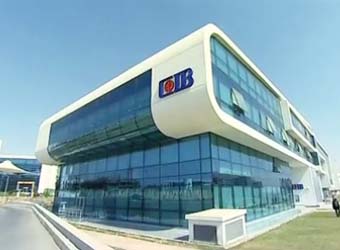Egypt-based agri-business firm Wadi Group is seeking to obtain 55% banking finance for Phase II of Egypt’s first river port project, the company’s CFO told Amwal Al Ghad on Tuesday.
Ramzi Nasrallah, Chief Financial Officer at Wadi Group, further stated that his firm is planning to hold talks with Commercial International Bank -Egypt (CIB) over providing 55% finance for Phase II of Nile Storage and Stevedoring Company (NSSC)’s project to establish Egypt’s first river port.
He noted that the phase II of river port project cost EGP 100 million and is set to begin by mid-2014. Therefore, the total cost of the river port project shall increase to around EGP 400 million.
Moreover, Mr. Nasrallah said Wadi Group will start within the upcoming phase the financing contacts with the CIB Egypt – which had formerly contributed with 35% in phase I of the project. The first phase of the project had cost EGP 300 million.
He explained that the second phase is designated to provide storage facilities through establishing 17 silos on a space of 45.000 m2 in order to contain up to 130,000 tons of grain annually as well as the equipment needed to unload and store shipments of all kinds.
Nile Storage and Stevedoring Company (NSSC) is a joint venture between Wadi Group and MedSofts and is considered the largest grain port facility in Egypt and the MENA region.
This comes after Egypt had launched the Phase I of its first river port on Monday, which entailed investments worth EGP 300 million, reported the state-run Middle East News Agency (MENA).
River transport can save at least 70 percent of the diesel consumption used in land transport. Diesel is heavily subsidized in the state’s already tight budget, creating a wide deficit. The port is also expected to relieve traffic congestion by taking at least 240 trucks that transport these goods to the different governorates off the already hazardous roads.
Egypt imports around 15 million tons of grains annually, a number that is expected to gradually rise over the next five years by an average of 3 percent.
Investing in river transport can cost the state less in energy subsidies, ease traffic on main roads and potentially move a larger amount of goods throughout the country.
The River Transport Authority aims to develop this field so that 10 percent of goods are transported via the river.



